
Geographical Indications
What is a geographical indication?
A geographical indication (GI) is a sign used on products that have a specific geographical origin and possess qualities or a reputation that are due to that origin. In order to function as a GI, a sign must identify a product as originating in a given place. In addition, the qualities, characteristics or reputation of the product should be essentially due to the place of origin. Since the qualities depend on the geographical place of production, there is a clear link between the product and its original place of production.
What rights does a geographical indication provide? ↓
A geographical indication right enables those who have the right to use the indication to prevent its use by a third party whose product does not conform to the applicable standards. For example, in the jurisdictions in which the Darjeeling geographical indication is protected, producers of Darjeeling tea can exclude use of the term “Darjeeling” for tea not grown in their tea gardens or not produced according to the standards set out in the code of practice for the geographical indication.
However, a protected geographical indication does not enable the holder to prevent someone from making a product using the same techniques as those set out in the standards for that indication. Protection for a geographical indication is usually obtained by acquiring a right over the sign that constitutes the indication.
For what type of products can geographical indications be used? ↓
Geographical indications are typically used for agricultural products, foodstuffs, wine and spirit drinks, handicrafts, and industrial products.
How are geographical indications protected? ↓
There are three main ways to protect a geographical indication:
These approaches involve differences with respect to important questions, such as the conditions for protection or the scope of protection. On the other hand, two of the modes of protection — namely sui generis systems and collective or certification mark systems — share some common features, such as the fact that they set up rights for collective use by those who comply with defined standards.
Broadly speaking geographical indications are protected in different countries and regional systems through a wide variety of approaches and often using a combination of two or more of the approaches outlined above. These approaches have been developed in accordance with different legal traditions and within a framework of individual historical and economic conditions.
A Tea Lover's Guide to Climbing IP Mountains
Guranse Tea Estate Pvt. Ltd., Nepal
Situated in the misty highlands in the Dhankuta District of the eastern part of the Federal Democratic Republic of Nepal (Nepal), the Guranse Tea Estate Pvt. Ltd (Guranse) was established in 1999 by the Vaidyas, a family of industrialists. High above Kathmandu – the capital of Nepal – and the picturesque Terai plains in the lowlands of the Himalayan Mountains, Guranse is a grower, producer and exporter of fine camellia sinensis (a plant species whose leaves and buds are used to produce tea).
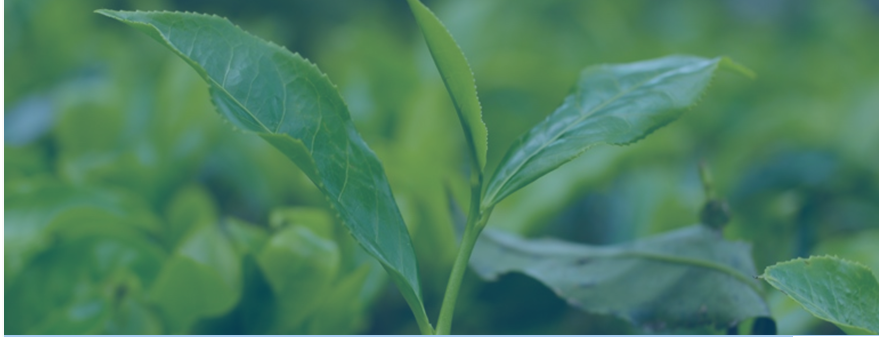
Sitting high above Kathmandu and the picturesque Terai plains in the lowlands of the Himalayan Mountains, Guranse is a grower, producer and exporter of fine camellia sinensis (pictured), a plant used to make tea.
With the support of the Vaidya family, over six hundred local farmers, the Nepalese government and international partners, the producer has been able to establish a reputation for quality, enter the international market and compete successfully against established tea makers from around the world.
Subsequently, Guranse has improved its farmers’ incomes and standard of living while marketing its high grade, aromatic teas to an international clientele in the Federal Republic of Germany (Germany), Japan and the United States of America (USA).
Research and development
Established and financed as a subsidiary of the Vaidya’s Organization of Industries and Trading Houses (VOITH), an investment company in Nepal, the Guranse estate has gained a reputation for growing the finest “Nepalese Orthodox Tea” – or Orthodox Tea.
Orthodox Tea is a high grade variety of tea made by combining two fine plucked tea leaves and one bud (as opposed to CTC tea – or cut, tear, curl; a three stage process from which this machine made tea derives its name).
The Guranse tea garden has planted organic, young and vibrant clonal tea bushes (via a method of selective plant breeding for specific qualities such as a golden tipped leaf), which have been cultivated following years of extensive research and development (R&D) in collaboration with various organizations including the Specialty Tea Institute (STI).
The STI, whose membership includes Guranse, is a division of the Tea Association of the USA, Inc., a tea advisory and accreditation organization in the state of New York, USA.
Indeed, with the support of VOITH, STI and other partners, Guranse has been able to raise its tea gardens and factories to an internationally recognized standard for quality while ensuring the skill and economic future of its managers and farmers.
One of the earliest developments by Guranse managers was the establishment of a state-of-the-art tea factory in 2003. Situated in Jabire, 18 kilometres (km) from Ilam town (a hilly area in the East of Nepal), the Mai-Ilam Guranse Tea Estate Industries Pvt. Ltd (Mai-Ilam Guranse) has had the capacity to produce 1,200 kilograms (kg) of tea annually.
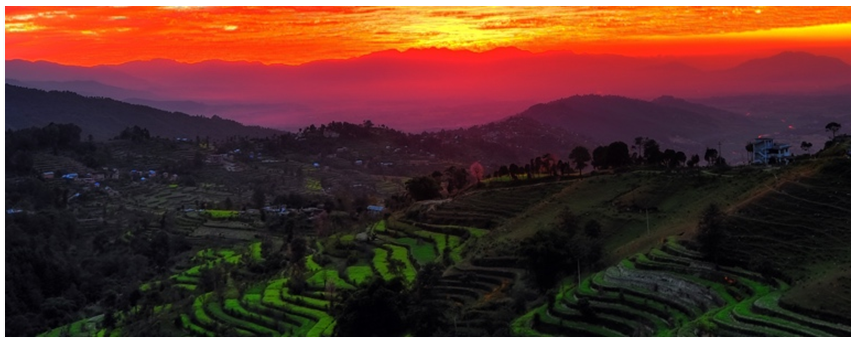 Guranse gardens are located at an altitude of between 1,000m to 2,200m above sea level in the eastern part of Dhankuta region, making it one of highest tea gardens in the world.
Guranse gardens are located at an altitude of between 1,000m to 2,200m above sea level in the eastern part of Dhankuta region, making it one of highest tea gardens in the world.
Designed by an expert on tea manufacturing who had extensive experience in renowned tea-houses in the neighbouring Republic of India (India), the spacious, purpose-built factory is the epitome of precision and efficiency.
Clean and well organized (delivery trucks have to enter a sanitation ford to cleanse the tires, while visitors and workers have to wear protective footwear before entry), the factory represents the hub of the Guranse tea production process.
Goods with specific geographical origin
Tea growing culture in Nepal can trace its roots to 19th century tea farming practices and crops derived from neighbouring countries such as India and the People’s Republic of China (PRC). In addition to its long heritage, the country’s geography and weather have been important factors giving Nepalese tea a particular taste and aroma.
Home to the Himalayas and some of the world’s tallest mountains, including part of Mt. Everest (Sagarmatha, in Nepalese), Nepal is generally classified into three geographical regions: the mountains, the hills (representing 70% of the country) and the plains. The country has distinct bedrock, geology, climate and hydrological characteristics. Moreover, only 20% of the country’s lands, which lie mainly in the plains and hills of the districts of Ilam, Taplejung, Panchthar and Dhankuta, are arable.
Although the eastern hills are often rugged and require extensive irrigation and terracing, 10% of this area represents some of the most fertile, rain-rich and arable soil in the country. The Ilam district, for instance, has an average of between 1,500 millimetres (mm) to 1,800 mm of rainfall annually.
Guranse gardens are located at altitude of between 1,000m to 2,200m above sea level – in scenic gardens spanning 290 hectares (940 acres) – in the eastern part of Dhankuta region, making it one of the highest tea gardens in the world. The estate is ideally placed for tea production and it produces a rich muscatel flavoured tea (from Muscat, a kind of grape whose flavour is suggestive of certain types of tea) with excellent aromas and a unique taste.
These tastes, in addition, are based on several local factors: the specifically warm and humid weather conditions; the particular acidity of the soil surrounding the Himalayan mountain range; the medium-fermenting techniques for processing the leaves (which transform green leaves into black tea leaves); and, the estate manager’s strategic decision to plant organic and vibrant Chinese origin tea bushes (or camellia sinensis, as opposed to Indian originated tea plants, or camellia assamica).
Such plants are grown in the shade of a tea nursery for a year before being transplanted into gardens where they are exposed to the fullness of Nepalese weather and soil which is rich in moisture and nutriment. Indeed, the weather of the Himalayan mountain range – a variable that directly affects the taste of Guranse teas – is one of the most important aspects of the region. The year is divided between a dry (October to May) and wet (June to September) season with temperatures ranging from -2°C in higher attitudes in January to 40°C in May in the Terai.
This unique climate provides for four main seasons (or “flushes”) of the year that are ideal for producing high-grade teas. Tea harvesting at the estate consequently begins in March (called the spring flush), continues in June (the summer flush), August (the Monsoon flush) and culminates in November (the Autumnal flush) of each year.
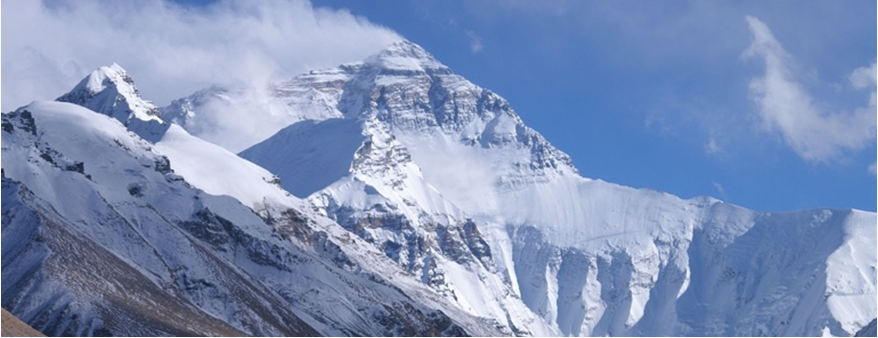 In addition to its long tea-growing heritage, the country's geography and weather have been important factors giving Nepalese tea a particular taste and aroma. Mt. Everest (pictured) In Nepal
In addition to its long tea-growing heritage, the country's geography and weather have been important factors giving Nepalese tea a particular taste and aroma. Mt. Everest (pictured) In Nepal
Each season’s harvest produces distinctly flavoured tea. First flush harvested leaves are young and produce a light tea of intense muscatel with a sharp edge. Second flush tea, moreover, are more matured and produce a bright and well-rounded muscatel flavour. Monsoon harvest teas, furthermore, give an intensely flavoured dark hued tea. Lastly, Autumnal teas, which are only harvested if the weather permits, usually provide a full, coppery taste.
Nepalese tea has become renowned for three kinds of high quality tea: (1) green tea made solely from the leaves of camellia sinensis (which is minimally oxidized or fermented); (2) white tea made from the young buds and leaves of camellia sinensis (which is allowed to wither under natural light then processed to prevent oxidization or further fermentation); and (3) black tea usually made of camellia sinensis (which is allowed to fully oxidize and is therefore stronger than other teas and contains more caffeine).
Geographical indication
Geographical Indication (GI) certification has been used by governments and agri-business in order to establish a strong, distinguishable and marketable reputation for certain producers and their goods based on their geographical location or farming tradition. With 86% of its 30 million inhabitants living in the countryside (2009 estimates, US Department of State) and agriculture providing 34% of GDP, Nepal’s government and agri-businesses have sought ways to promote rural development and alleviate rural poverty in the country (55% of Nepalese live below the poverty line of US$1. 25 a day).
In order to establish a GI for Nepalese tea, the government of Nepal has worked with the country’s tea growers and producers and international partners in three ways: (1) to incorporate cooperatives of farmers; (2) to frame the necessary domestic legislation for recognizing GIs and other intellectual property (IP) rights; (3) and, to establish tea governing bodies whose purpose is to support tea farmers.
Since the early 2000s, tea estates in Nepal have organized themselves into several cooperatives including the Himalayan Tea Producers Association (HOTPA, which was formed by Guranse and other hillside farmers). Working with HOTPA and other organizations, in 2010 the Nepalese government devised a new long term strategy for development called the Nepal Trade Integration Strategy (NTIS). Part of the NTIS initiative was the need to create the appropriate IP environment to facilitate economic progress.
Laws recognizing tea GIs would have to be enacted (by 2012), the government said, and IP laws within the country would have to be amended to take cognizance of other IP rights (IPRs) and related frameworks including collective marks and certification marks, traditional knowledge, establishment of databases for IPRs, fiscal incentives to encourage Nepalese firms to adopt IPRs, and establishment of an IP enforcement agency.
Motivated by the NTIS initiative, companies in Nepal have adopted various industry certifications such as International Organization for Standards (ISO), an industry lead standard to ensure product and procedural quality and safety. Other industry standards that are becoming popular in the country include Hazard Analysis and Critical Control Points (HACCP), a food safety system based on analysis of biological, chemical and physical dangers in all stages of the production and procurement process and Good Agricultural Practices (GAP), a locally defined, internationally recognized structure for safety practices in agricultural production.
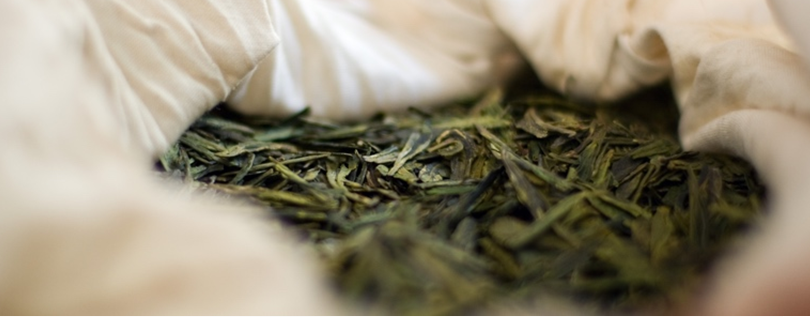 Since the early 2000s, tea estates in Nepal have organized themselves into cooperatives including the Himalayan Tea Producers Association, which was formed by Guranse and other hillside farmers.
Since the early 2000s, tea estates in Nepal have organized themselves into cooperatives including the Himalayan Tea Producers Association, which was formed by Guranse and other hillside farmers.
Guranse has incorporated such certification marks and international standards into its tea growing processes. In so doing, the tea producer codified farming practices and made sure that its operations were fit for purpose and ready for a GI certification.
As of 2012, tea producers in the country, including Guranse, have awaited the enactment of a GI for Nepalese tea. With a GI registration, Guranse and other producers will be able to usher in a new dawn of professionalism and value added service. At the same time, they will be able to distinguish their products from those of rivals, confidently enter the international market with quality goods and improve the farming know-how, quality and standard of living of tea producers in the country.
Branding and commercialization
After years of neglect, Nepali tea growers have become aware of the benefits of creating a brand image strategy that can be leveraged in order to enter a fiercely competitive and economically volatile global tea market. In 2003, for instance, Guranse representatives attended an STI symposium – the 15th Annual Conference and Exhibition (the Symposium) – that was held in conjunction with the Specialty Coffee Association of America. The Symposium offered seminars on “specialty tea” as a unique tea category with a niche market potential for Nepalese farmers. The event also featured training programs, attended by Guranse, which covered the fundamentals of how to source, brew and market specialty tea.
Moreover, during their stay in the USA, Guranse representatives were able to visit several businesses including tea salons and cafés, tea chain store buyers, gourmet outlets and other food-service organizations. Via such events, the tea estate was able to define its product development strategy, gain a firm understanding of its potential clients and customers and pave the way for future growth.
To reach new markets and win new customer, Guranse has focused on producing quality tea. Unlike many other gardens, Guranse farmers’ carefully fine pluck their teas in a precise fashion (by harvesting only the bud and the second and third leaves, hence the top grade Orthodox Tea) which provides for superior taste, compared to course plucked teas (where the bud and more than two leaves are plucked hurriedly and thus giving lower quality teas).
Moreover, HOTPA and other Nepali tea cooperatives have joined hands with internationally renowned personalities and other partners in order to create and market a new brand – called “Nepal Tea: Quality from the Himalayas.” Working with famous mountaineers who acted as the brand’s ambassadors (including an Italian climber, Reinhold Messner, who famously climbed all of the tallest peaks in Nepal), HOTPA and its partners (such as Deutsche Gesellschaft für Internationale Zusammenarbeit, GIZ, an organization for international development based in Germany) have created an internationally respected reputation for quality “Nepal Tea”.
In part due to this collaboration, “German investors are keen to visit Nepali gardens and more than a dozen of them will be visiting Ilam […] to examine the potential of Nepali tea,” said Arun Rana, a consultant for GIZ.
Working with the German organization and others, moreover, Nepali tea producers, including Guranse, have created a separate brand called “Nepali Orthodox Tea” – a premium brand that was developed with the international market as the main target.
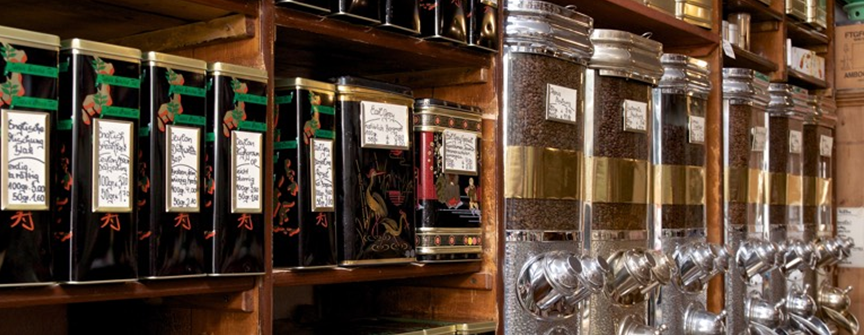 Nepali tea growers have become aware of the benefits of creating a brand image strategy that can be leveraged in order to enter a fiercely competitive global tea market.
Nepali tea growers have become aware of the benefits of creating a brand image strategy that can be leveraged in order to enter a fiercely competitive global tea market.
In addition, in 2005 HOTPA was able to augment its members’ brand image by devising a code of conduct (CoC) for its tea producers in collaboration with international partners such as the Japan International Cooperation Agency – an international development agency based in Japan.
In order to incorporate the CoC, the cooperative also worked with Winrock International (Winrock), a non-profit regeneration organization based in the USA; Helvetas, a development organization based in the Swiss Federation; and local organizations including the Nepal Tree Crop Global Development Alliance, an entity founded in 2003 by the Nepali government in order to formulate tea related policies in the country.
HOTPA’s CoC contained four core principles: (1) Respect for Nature (this required members to preserve biodiversity); (2) Respect for People (which demanded no child labour or gender discrimination); (3) Respect for the Production System (which required farmers to follow nationally and internationally approved production procedures); and, (4) Commitment to Quality (which urged consistent quality from producers).
Among the CoC’s many positive innovations was the need to provide training for farmers. As a spokesperson for Guranse said, “We understood that quality could be better but farmers lacked knowledge. We selected farmers from seven tea-producing areas and put them through rigorous training. They went back and trained 10 more farmers from their villages and the multiplier effect was quite big.”
Also entailed in the CoC is the requirement that gender inequality among farmers be eradicated. Although female workers in Nepal have traditionally been paid less than males in similar occupations (the minimum wage for male labourers in Nepal has been between 100-150 Nepal Rupees (Rs) and 80 Rs for women, in 2006), the CoC was intended to raise the status of women in Nepalese rural communities by putting them on equal pay footing with men.
Adopting a CoC has been a boost for the fortunes of Nepalese tea producers in other ways. Coupled with implementation of industrial certification standards, a requirement of the CoC, tea gardens in the country have branded themselves as modern organizations that are fit for purpose. The Mai-Ilam Guranse factory, for instance, has been (since 2001) ISO 9000:2000 certified by TUV Rhineland – an independent organization based in Germany that certifies products, equipment and processes.
The Guranse estate, moreover, is one of a handful of tea gardens in Nepal that is organic produce certified by several organizations including the National Association for Sustainable Agriculture, an organic certifier based in the Common Wealth of Australia (Australia).
With international standards at the core of its production and processing procedures, Guranse and other tea producers in Nepal are reaping the financial benefits – which include developing an entirely new income stream.
Quite apart from income directly derived from tea commercialization, tea tourism has become a potentially significant income generator for Nepalese tea managers and farmers and a major contributor to the success of tea branding and rural economic development in Nepal. Using the successful tea tourism models of other areas such as Darjeeling (in the Republic of India – India), for inspiration, tea tourism manager at Guranse, Mr. KC Santosh said, “If we create the proper atmosphere, we can make five Darjeeling’s in Dhankuta and attract buyers and tourists at the same time.”
Indeed, the introduction of CoCs was a major turning point for many tea growers in Nepal. It was able to usher in a new dawn of professionalism and sense of purpose to an industry that had been neglected for many years due, in part, to political and socio-economic instability in the country.
The Guranse tea garden, meanwhile, has created and commercialized its own brands of tea that are manufactured in wooden chests weighing between 35 – 40 kg or, upon request, in smaller packages. There are several types of tea available from the producer including: Type Sample – Black Tea (TGBoP); Super Fine Tippy Golden Flowery Orange Pekoe (SFTGFOP); Golden Orange Fanning’s Type Sample (TGOF Fanning); and Type Sample – Black Tea (PD-Bust).
Guranse is a member of the Global Compact initiative, a policy framework calling on businesses to align their operations with several principles including human rights.
As of 2012, an influx of tourists have already visited tea gardens in Nepal where they can stay in specially made cottages or with farmers themselves, enjoy tea and explore the surrounding environment. In the same year, Nepal Tea, Nepal Orthodox Tea (or Orthodox Tea) and other tea brands from the country were traded at tea fairs or exported to a growing network of distributors and retailers in several countries around the world such as Australia, Austria, Denmark, France, Germany, Holland, India, Japan, Norway, the PRC, the UK and the USA.
Environment
The Nepalese government, its tea producers and international partners have prioritized environmental concerns, making sure that these issues are seared into the fabric of the country’s development strategy. Guranse, for example, is a member of the United Nations (UN) inspired “Global Compact” (GC) initiative, a policy framework calling on businesses around the world to align their operations with the 10 universally accepted principles in the realms of human rights, the environment, labour, and anti-corruption practices.
Derived from internationally agreed treatises such as the Universal Declaration of Human Rights, GC principles include the injunction that businesses are not complicit with human rights abuses or that organizations should support the use of environmentally friendly technologies.
In a 2009 letter (“Statement for the Continued Support for the Global Compact”) to the GC committee, Guranse’s president, Mr. Suraj Vaidya, said “We commit to making the Global Compact and its principles part of the strategy, culture and day-to-day operation of our company and undertake to make a clear statement of this commitment – both to our employees, partners, clients and to the public.”
To this end, Guranse has sought ways to implement all elements of the GC into its CoC in a step-by-step process. To achieve its child labour eradication aims, for example, Guranse has provided funds for hiring two local teachers and for renovating the local school in an effort to ensure children in the area can go to school instead of staying at home or being employed to labour with parents on tea farms. By gaining an elementary education (rather than labouring), these children’s prospects for the future (such as entering higher education or seeking a variety of occupations other than manual work) would be opened.
Guranse, moreover, is committed to implementing environmentally friendly farming practices (as stated in its CoC). To this end, the company had, in 2009, used purely organic manure as fertilizer (therefore eschewing chemical pesticides and fertilizers) and created a microclimate on the farm by planting shade trees, shelter belts and tree avenues. The three latter measures ensure tea plants' development while protecting other flora and fauna in the area, including native wild animals, plants and insects.
By using organic fertilizer, in addition, Guranse has been able to preserve the nitrate and nitrogen content of the soil and thereby maintain a sustainable environment for tea farming. Furthermore, land degradation and soil erosion has been a problem in Nepal (especially for hill-side farmers but also for plains dwellers) that has left some rural workers vulnerable to man-made hazards (such as a decline in soil nutrients) and natural disasters (including mud slides and floods).
By encouraging tea farming and establishing it as an alternative and viable economic pursuit (compared to increased livestock farming which puts pressure on the environment), rural migration has been better managed and hill side communities and their lands provided with an environmentally sustainable means of making a living. Because of the growth in tea farming “[Nepali farmers] could supplement local crops, like potato and maize, with tea,” said Mai-Ilam Guranse’s chief designer.
Business results
Tea farming in Nepal has come a long way since a concerted and strategic effort for its development began in the early 2000s by the country’s government and producers in collaboration with international partners.
Through international marketing and branding campaigns, Nepal Tea and Nepal Orthodox Tea have become recognized premium brands retailing at 10,000 Rs per kg, its highest price on record.
To achieve its child labour eradication aims, Guranse has provided funds for hiring two local teachers and for renovating the local school.
Overall, the country produces 11.7 million kg of tea every year from estates employing 40,000 people planting over 15,000 hectares. Almost 2.0 million kg of the total tea produced is Orthodox Tea (the rest is CTC tea), and 70% of this premium tea is exported to India, France, Germany and the USA.
Tea tourists from the PRC, Japan, Sri Lanka, Switzerland and the USA, moreover, have visited several gardens in Nepal where they have interacted with farmers and stimulated the local economy.
Guranse, meanwhile, has seen its productions increased (the garden produced 1.5 million kg of tea in 2010), its international influence strengthened (the company participated in several trade fairs including the World Coffee and Tea Cup in Germany) and its profits increased to 10 million Rs (US$ 142,000).
Because the Mai-Ilam Guranse factory has its own trading centre, farmers have been able to sell tea and other crops at the site at a stabilized price, free of the price volatility and uncertainty of past years.
Climbing the peaks of a tea mountain
Having spent decades in the shadows of well-known tea gardens from India and other countries, the Nepalese tea industry has managed to break free into a new dawn. Through a branding and marketing strategy that included increased awareness and use of its human and natural resources, the industry has worked with government and international organizations to lay the groundwork for a comprehensive IP framework and (tea) promotion strategy.
Early supporters of this approach, including the Guranse tea estate, are already enjoying the benefits of professionally managed production processes using state-of-the-art equipment and relying on enthusiastic farmers and managers. Nepali tea is coming of age and is beginning to compete on the international market based on quality products and fair pay for producers premised on a fast developing IP framework.
Geographical indications, ip mountains, guranse tea, specific geographical origin